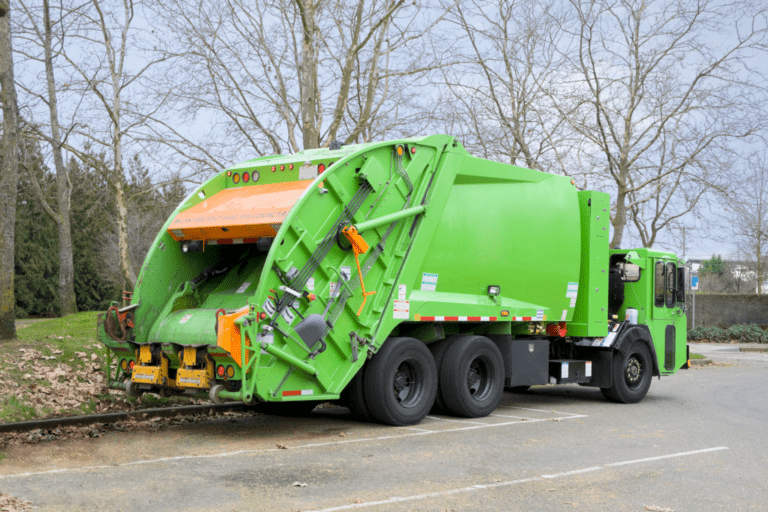Cold winter months are quickly approaching, bringing with them plenty of rain, ice, and snow. Not only are the roads more dangerous, but colder temperatures can be tough on your fleet’s vehicles. What are the precautions you need to take to make sure that your vehicles are roadworthy and your drivers stay safe?
This is your guide to everything you need to know about maintaining vehicles in the cold winter months and keeping drivers safe on the roads.
Check Vehicles in Your Fleet for Open Recalls
From time-to-time, manufacturers issue recalls on certain models of vehicles. Some recalls are minor and do not pose a safety hazard, while others are serious and should be repaired immediately. You can visit the DOT’s NHTSA’s recall lookup tool to find out whether or not there are any open recalls on any of the vehicles in your fleet.
This is easily determined by entering the VIN number into the online tool. If there are any open recalls, take the vehicles into a dealership to have any issues corrected. The great news about having repairs done on vehicles under recall is that it is FREE!
Ensure Drivers Are Familiar With Vehicle Features
Driver familiarity with your fleet vehicle’s features is one of the most important practice tips for the upcoming winter months. Make sure drivers understand how these features work, like as anti-lock brakes, react in slippery conditions as opposed to normal passenger vehicles.
Some vehicles have extra features like traction control that can be enabled when appropriate. Understanding the features of the vehicle and being comfortable with them will increase the safety of your drivers on the road.
Scheduled Maintenance
The summer and warmer months are a great time to prep for the winter. If there were any issues that were just beginning to rear their heads in the summer, but were more of a minor annoyance than a real concern, be sure to take appropriate action before colder weather hits.
In general, prior to the winter months, you should make sure all vehicles in your fleet are taken in for regularly scheduled maintenance. This will ensure your vehicles are in optimal condition.
Stock Each Vehicle in Your Fleet With a Winter Kit
If you’re unlucky enough to have issues arise, a winter kit will be handy. Prepare a winter kit for each vehicle in case of such events. Items you should include are:
-
Jumper cables – In the event that your vehicle will not crank, these are essential to ensure your drivers have the equipment they need in emergencies. You can even purchase battery-powered jump starters so that your driver doesn’t even need another vehicle. Just make sure the unit is capable of providing the amps required.
-
Ice scraper – These are essential if you do not garage your fleet, or in the event of icy or snowy weather
-
Sand – Useful for emergency use, and safely crossing icy patches
-
Flashlights – LED flashlights not only are a life saver for emergencies, but also troubleshooting problems under the hood.
Additional recommended items include a battery-powered phone charger, head lamps, emergency flares, pocket knife, food and water.
Conduct Inspections Before and After Trips

Pre-trip inspections and post-trip inspections are extremely important and can help prevent drivers from becoming stranded in extreme weather conditions. Pay special attention to these items:
-
Battery – It comes as no surprise that batteries are a common problem with vehicles during the winter months. If your batteries showed signs of wear and tear during the summer, you’re likely to have real difficulties with them during the winter as it takes more energy to power vehicles in cold weather. Make sure batteries are in good condition, free of corrosion and that the battery cable connections are secure.
-
Headlights and taillights– Get your drivers to ensure both taillights and headlights are working so they can see the road ahead of them and other drivers can see them. A critical inspection item not to overlook.
-
Antifreeze and fuel conditioner – Check to verify that fuel (like diesel) vehicles won’t risk freezing in colder weather. A diesel fuel conditioner with anti-gel is one solution. Also, be sure to service your cooling/antifreeze levels before winter driving season
-
Washer reservoir – Levels of washer fluid should be adequate so that unwanted dirt and debris can be removed from the windshield for visibility.
-
Windshield wipers – Cold weather can wreak havoc on windshield wipers. Indeed, ice and snow can tear the rubber on windshield wipers, rendering them useless. This is a safety hazard, that needs immediate attention.
-
Oil and transmission fluid – The fluids in a vehicle, such as oil and transmission fluid, will be less efficient in cold weather as it makes them less viscous. Fluids need to be clean and at recommended levels.
-
Defrosters – Drivers must check to make sure the defrosting system is working as it should. This is extremely important for visibility on the road.
-
Tires – Air compresses in cold weather, and the same is true for the air in your tires. This means your drivers may need to add more air to the tires of your fleet vehicles during the winter months to keep them within the recommended range. They should check treads are good, and that there aren’t any obvious defects such as knots that could cause a tire to blow out.
-
Windows – Checks for cracks in the windows, especially the windshield that may get worse in colder weather
-
Forward sensors – Sensors and turn signals should be tested.
-
Backup camera – Double check backup cameras, especially when snow or ice may be obstructing the camera lens.
Conclusion
Keeping track of all of these pre and post-trip inspection items can be a nightmare on paper. That’s where Whip Around’s inspection software can help.
The easiest to use solution in the industry, drivers can conduct inspections right from their mobile device, notify you immediately if there is an issue with their vehicle, and even alert you to issues when they are on the road.
Your inspection forms can also be customized to fit the needs of your fleet, and vehicle reports can be accessed and managed with the click of a button.
Book a demo or start a free trial today to see for yourself how Whip Software can simplify fleet management and help your drivers stay safe this winter.









